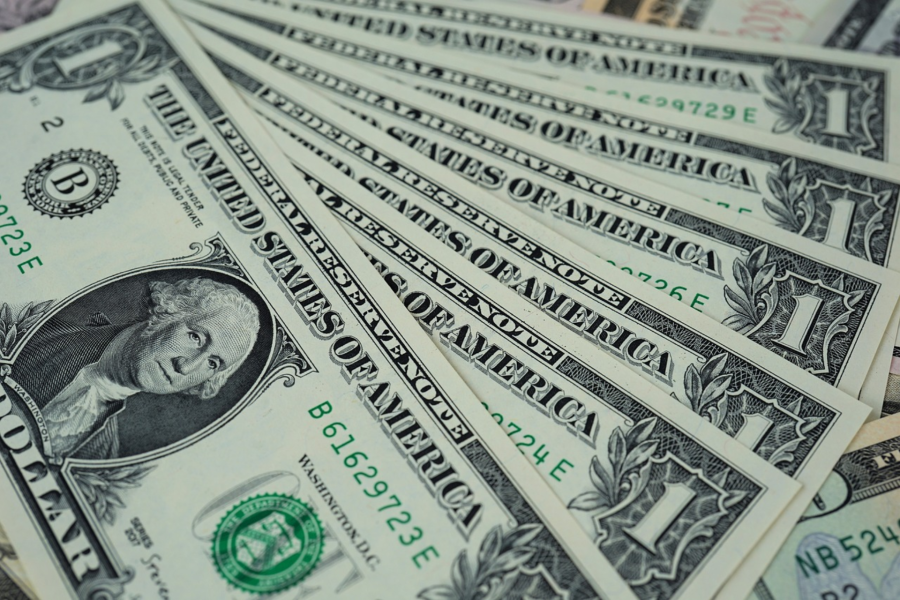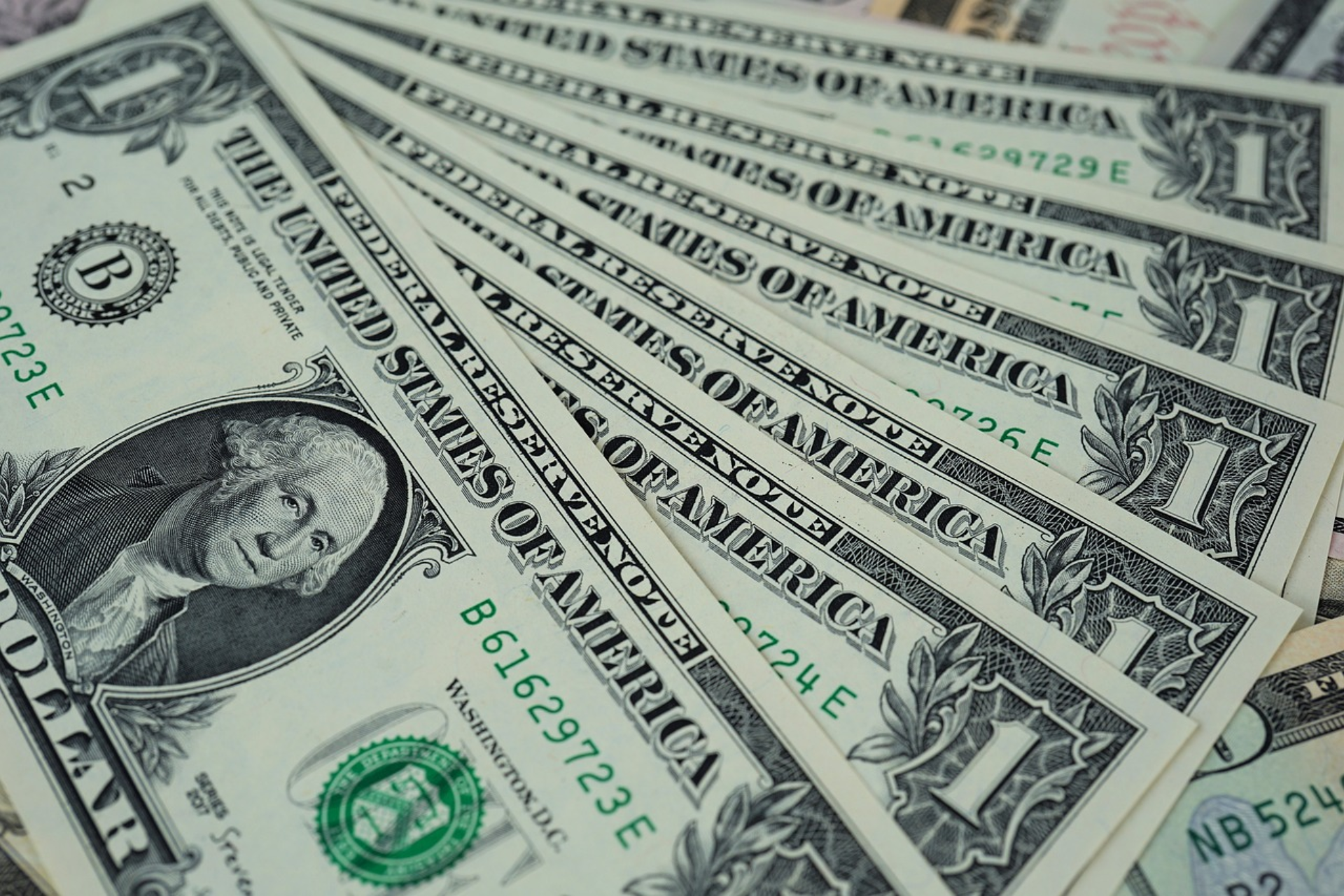
Dollar muted as markets brace for data fest; yen under pressure
The U.S. dollar muted slightly on Tuesday as traders resisted placing large bets ahead of a slew of economic data this week.

Reuters: The U.S. dollar muted slightly on Tuesday as traders resisted placing large bets ahead of a slew of economic data this week, while the yen languished near levels that triggered intervention last year.
U.S. DOLLAR MUTED ON TUESDAY
Against a basket of currencies, the dollar eased 0.058% to 103.87, after slipping 0.2% on Monday. The index is up 2% this month and is coming off a run of six straight weeks of gains as resilient U.S. economic data bolstered expectations that rates may stay higher for longer. That view gained more traction after Federal Reserve Chairman Jerome Powell suggested on Friday that further interest rate increases may be needed to cool still-too-high inflation, though his promise to move with care at upcoming meetings provided for some uncertainty.
With the U.S. central bank highlighting the rate path will be heavily dependent on data, the spotlight will be on a batch of economic indicators this week, including payrolls and personal consumption expenditure. Data dependent central banks keep the currency market susceptible to the latest major indicators, strategists from BofA Global Research said in a note. “Should U.S. growth begin to soften the market will re-focus on sooner rate cuts from the Fed. Conversely, resurgent inflation could pose over-tightening risks globally, introducing greater ‘hard landing’ risks.”
ALSO READ: Who is the richest person in the world today? Top 10 list – 29 August 2023
First up is job openings figures for July later in the day. Economists polled by Reuters expect job openings to come in at 9.465 million, easing slightly from June. Carol Kong, currency strategist at Commonwealth Bank of Australia, said stronger-than-expected job data could boost market pricing for another Fed rate hike and push up the dollar. Markets are pricing in a 78% chance of the Fed standing pat on interest rates next month, the CME FedWatch tool showed, but the odds of a hike in the November meeting are now at 62% compared with 42% a week earlier.
“Our base case is that the Fed has completed its tightening cycle and will begin its easing cycle in March 2024,” CBA’s Kong said. “But Powell’s hawkish comments at Jackson Hole suggest the risks are skewed to more tightening and a later start to the easing cycle.” The widening gap in interest rates between Japan and the United States has pressured the yen, with the country’s low yields making the currency an easy target for short-sellers and funding trades.
The yen was little changed at 146.43 per dollar in Asian hours but remained close to 146.75, its lowest level since Nov. 9. The Asian currency is down about 11% against the dollar for the year. Wary traders have been on the look out for any signs of intervention from the Japanese authorities. Japan intervened in currency markets last September when the dollar rose past 145 yen, prompting the Ministry of Finance to buy the yen and push the pair back to around 140 yen.
ALSO READ: Newspaper front pages from around the world, 29 August 2023
“If U.S. data, and consequently U.S. yields, continue to be firm, we could see increasing pressure on the yen,” Charu Chanana, market strategist at Saxo, said. Chanana said the intervention threat has retreated at sub-150 levels, given the lack of any currency related comments from Bank of Japan Governor Kazuo Ueda at the Jackson Hole conference and no signs of verbal intervention yet.
The euro was up 0.12% to $1.083 ahead of euro zone inflation data later this week. The single currency is up for the second straight day, stepping away from the two month low it hit last week. Sterling was last at $1.2623, up 0.16% on the day, also moving off two-month lows from last week. The Australian dollar was up 0.26% at $0.645, while the New Zealand dollar gained 0.19% to $0.592.
BRITISH POUND
FXStreet: GBP/USD continues to gain for the second consecutive day, trading around 1.2620 during the Asian session on Tuesday. A sense of cautious optimism weakened the yields on US government bonds, contributing to the upward movement of the GBP/USD pair. Additionally, the hawkish remarks made by the Bank of England Deputy Governor Ben Broadbent at the Jackson Hole Symposium helped the Cable pair to snap a four-day losing streak. As said, Broadbent advocated for policy rates to remain higher for a prolonged period.
ALSO READ: Manufacturer wins interdict against load shedding – could this set a precedent?
The US Dollar Index, which measures the performance of the Greenback against the six other major currencies, extends its losses and trades around 103.90. The recent fiscal measures introduced by China to attract investors back to its struggling stock markets are contributing to optimistic risk sentiment and weakening the safe-haven US Dollar. Investors await upcoming data releases from the US, seeking new insights into the country’s economic prospects.
These datasets include Jolts Job Openings, Housing Price Index, and Consumer Confidence, all of which are set to be disclosed later in the day. These data releases are anticipated to provide valuable perspectives on the US economic trajectory, potentially impacting trading strategies related to the GBP/USD pair.
SOUTH AFRICAN RAND
Reuters: The South African rand slipped on Monday in response to higher U.S. Treasury yields and concerns over further U.S. interest rate hikes. At 1156 GMT, the rand traded at 18.6650 against the dollar, over 0.3% weaker than its closing level on Friday. The dollar last traded around 0.1% weaker against a basket of global currencies. On Friday, addressing the Jackson Hole Symposium of global central bankers, U.S. Federal Reserve Chair Jerome Powell reiterated that further interest rate hikes are on the cards in the world’s biggest economy, should they be needed to lower inflation.
ALSO READ: Who are the richest South Africans in the world today? – 29 August 2023
“This usually does not bode well for risk assets,” said Bheki Mahlobo, market analyst at ETM Analytics. The risk-sensitive rand often takes cues from global factors, such as U.S. monetary policy, in the absence of local economic drivers. Other global dynamics included the BRICS summit in Johannesburg last week where South African President Cyril Ramaphosa announced the expansion of the bloc of emerging economies.
“The inclusion of countries such as Saudi Arabia and Iran could be read as South Africa moving away from the West, which does carry significant risks should Western countries respond aggressively,” Mahlobo added. Local data releases this week include July money supply, private sector credit and budget numbers on Wednesday, and July producer inflation and trade figures on Thursday.
On the Johannesburg Stock Exchange, both the blue-chip Top-40 and the broader all-share indices last traded around 1% higher from their Friday close. South Africa’s benchmark 2030 government bond was flat, with the yield at 10.210%.
ALSO READ: Fuel price SHOCKER: Petrol and diesel hike next week is THIS BAD
GLOBAL MARKETS
Reuters: China stocks led Asian shares higher on Tuesday with investors welcoming Beijing’s efforts at supporting markets, while bonds rallied and the dollar dipped on possibly softening U.S. data. MSCI’s broadest index of Asia-Pacific shares outside Japan rose 1%, with the Hang Seng in Hong Kong up more than 2% and mainland China blue chips up 1.5%. China has halved stock trading stamp duty, loosened margin loan rules, put the brakes on new listings and approved new retail funds in recent days signalling, at least, resolve to steady the market even if it does little to support the sputtering economy.
After selling into Monday’s initial bounce, after the measures were announced over the weekend, foreign investors were net buyers of about $500 million in Chinese stocks on Tuesday perhaps in the hope that more substantive aid will follow. “We doubt these policies per se can turn around confidence or determine the market direction,” said Bank of America analysts “Financial markets are only a reflection of the underlying economy, and we need policies that can address the fundamental economic issues in our view, the next 2-3 weeks is still an important window for policy actions.”
Embattled Chinese developer Country Garden led gains in Hong Kong, along with electric vehicle maker BYD, which reported a tripling in first-half profit. Pressure remained on China Evergrande, and the builder which once traded above HK$30 a share fell 10% to HK$0.31 in its second session back from suspension – highlighting the heavy doubts that remain over the country’s debt-stricken property sector.
ALSO READ: R350 SRD grant: Here are the payments for the rest of the year
U.S. futures were flat. European futures rose 0.2% and FTSE futures rose 0.8% to point to a positive return from a day’s holiday in London. Elsewhere in Asia, investors’ focus was on U.S. data that may determine whether or not interest rates need to rise further. Job openings figures are due later on Tuesday, followed by broader labour data and the ISM survey on Friday, and bond traders were positioning for a soft turn in the numbers.
“There’s anticipation of a bit of a slowing in the labour market and cooling of the inflationary pulse,” said Ryan Felsman, senior economist at the Commonwealth Bank of Australia in Sydney. U.S. Treasuries extended overnight gains, driving two-year yields down five basis points to 5% and 10-year yields down two bps to 4.1922%. That put some gentle pressure on the dollar, which has slipped below its 200-day moving average to $1.0833 per euro and was slightly lower on other majors.
The Australian dollar inched 0.3% higher to $0.6440, with incoming central bank governor Michelle Bullock due to speak later in the day. The yen remained pinned near Monday’s 10-month low, for a loss of some 10% on the dollar this year. Traders are wary that its weakness might soon prompt government intervention, and at 146.30 per dollar it was barely moved by a government report suggesting an inflection point in the country’s years-long battle with deflation.
ALSO READ: Former President Trump’s trial set for March 4
In commodities, Brent crude futures slipped 0.2% to $84.27 a barrel. European gas prices might be set for a volatile session on a deepening standoff over pay and conditions at Australian gas rigs, with workers planning stoppages from next week. Benchmark Dutch prices are up 40% for August so far.
ALSO READ: Call for police officers to wear BODY CAMERAS gathers pace
Published by the Mercury Team on 29 August 2023
